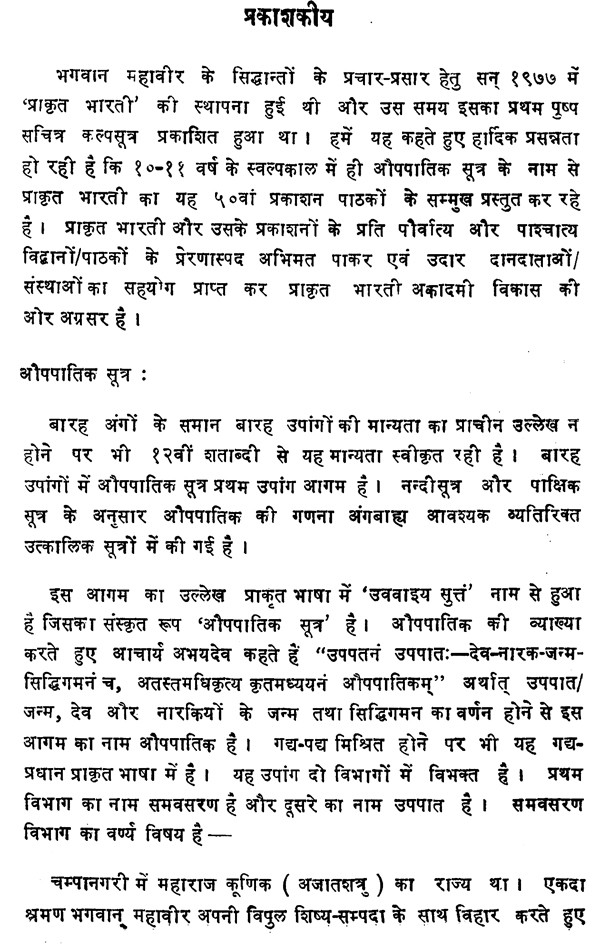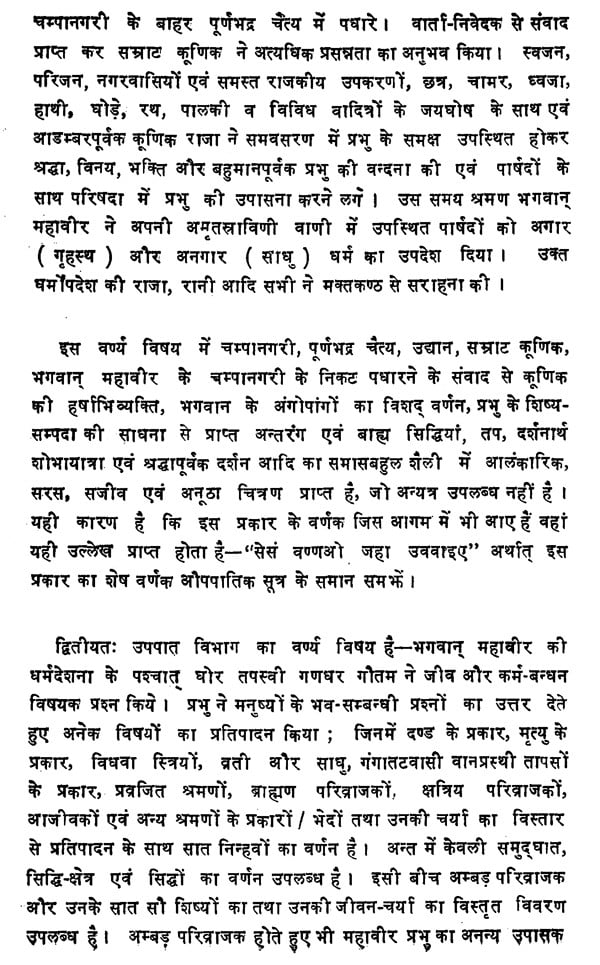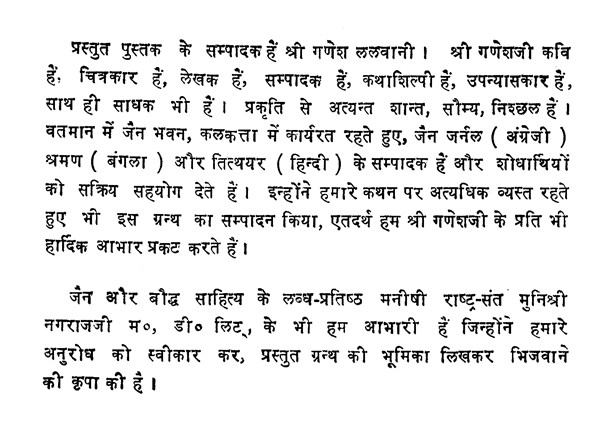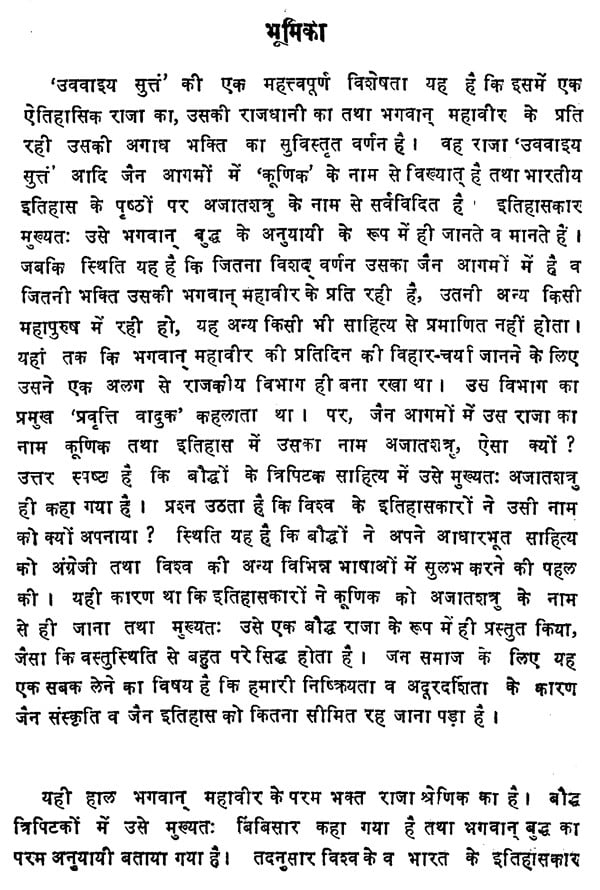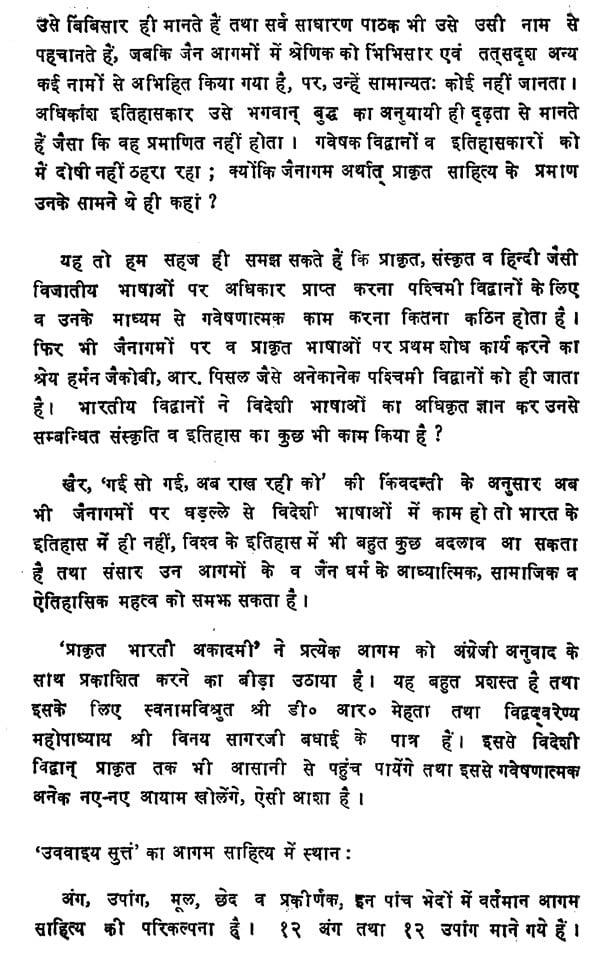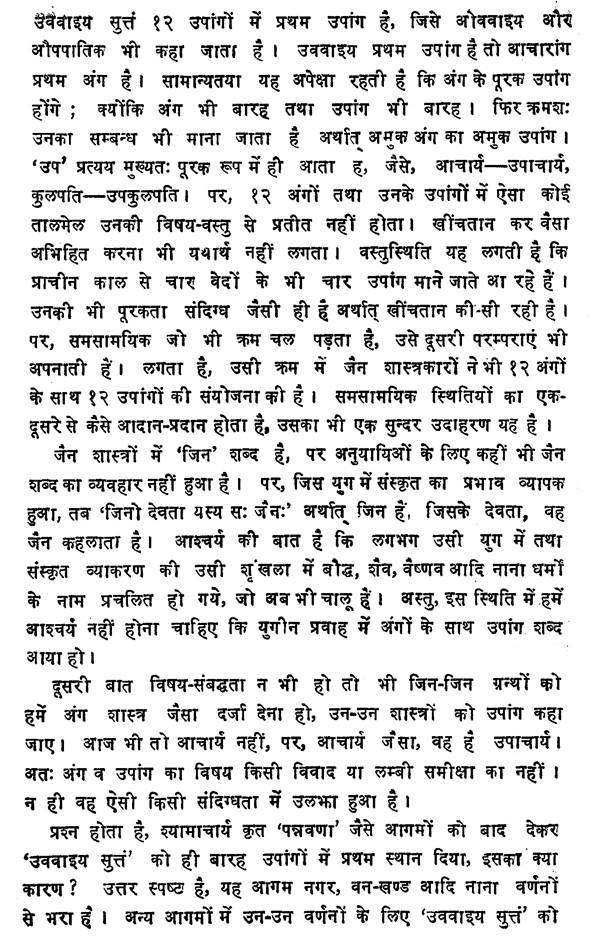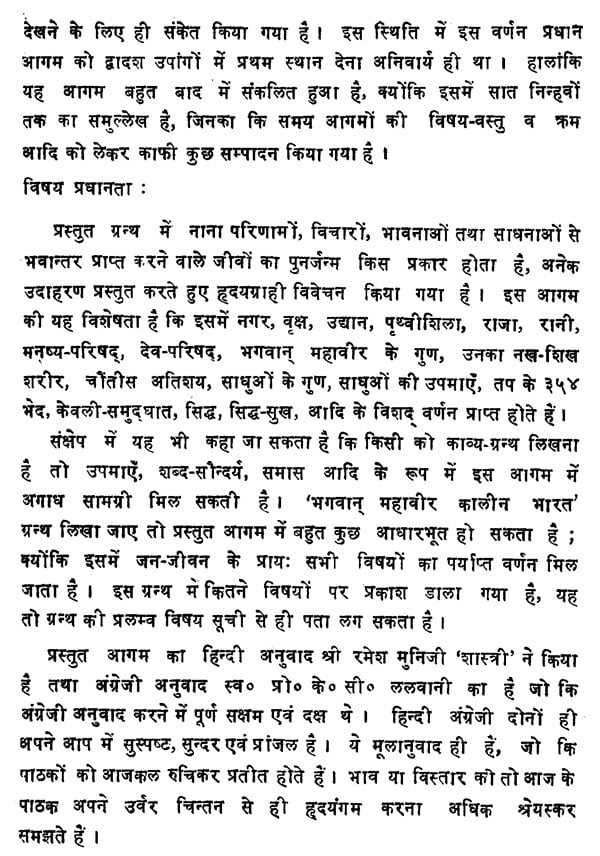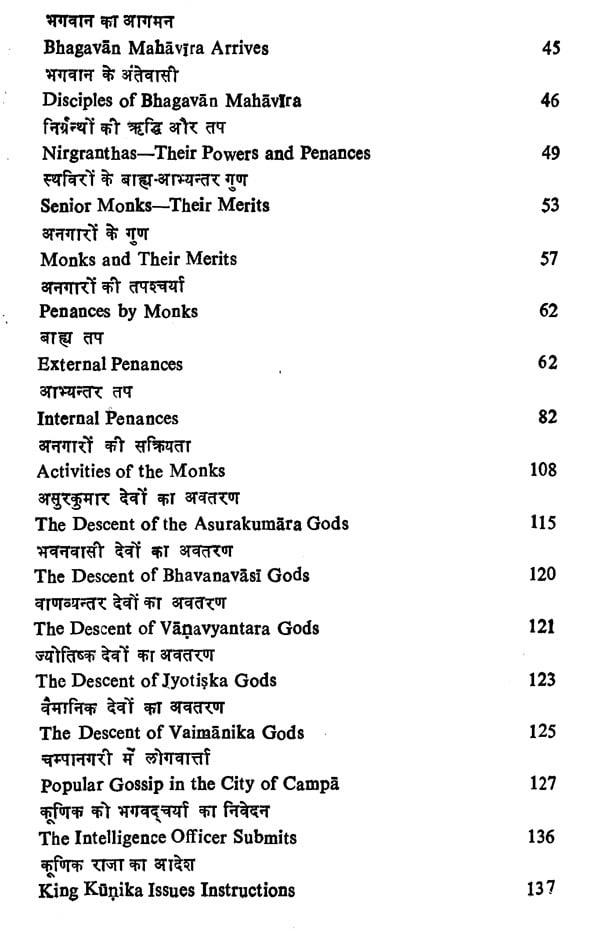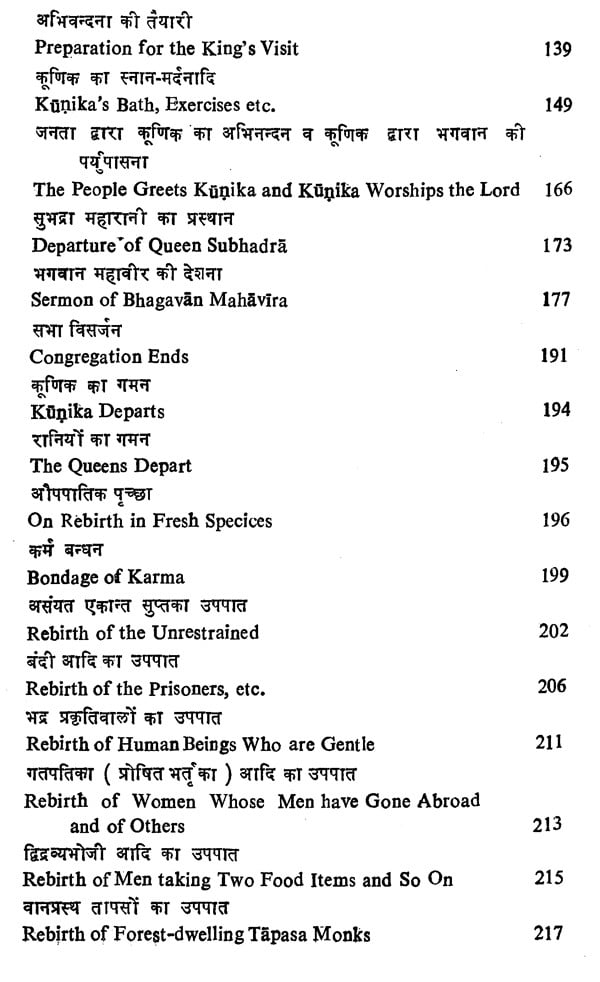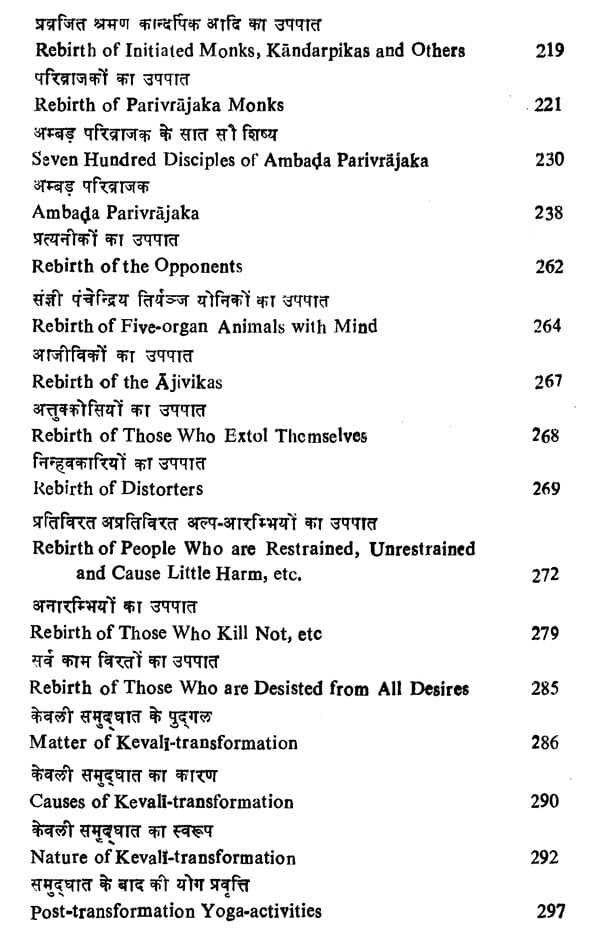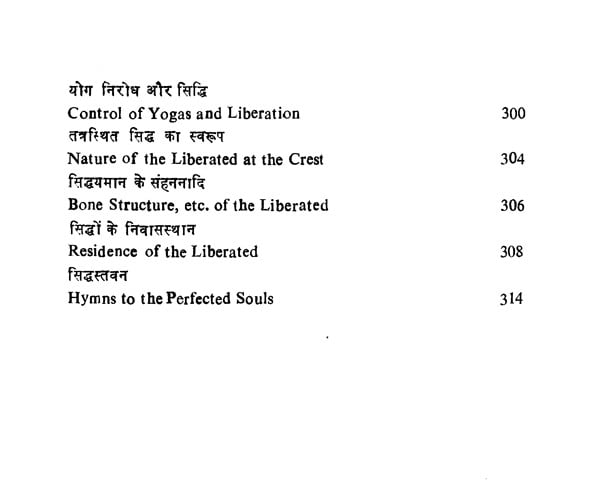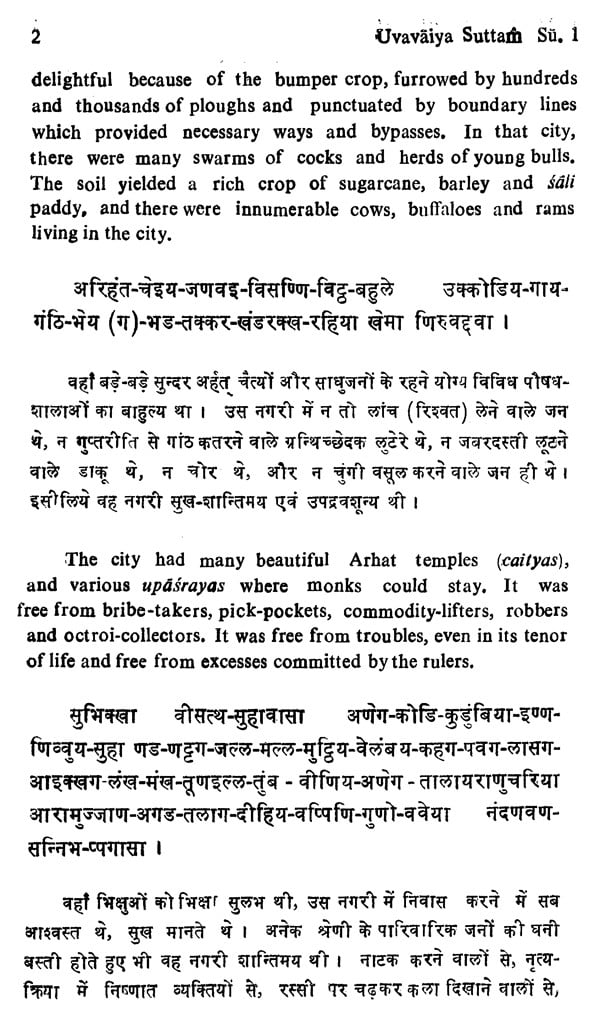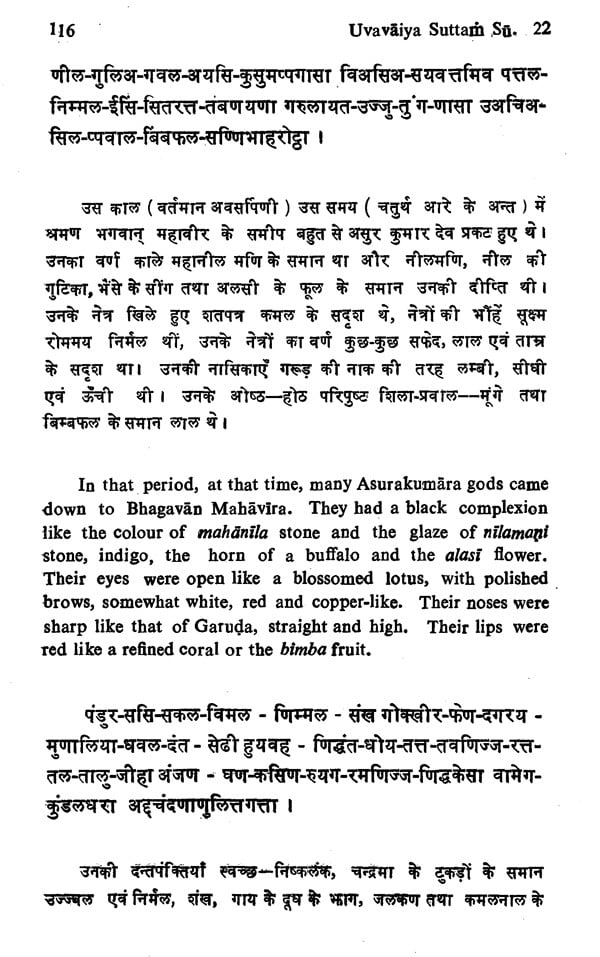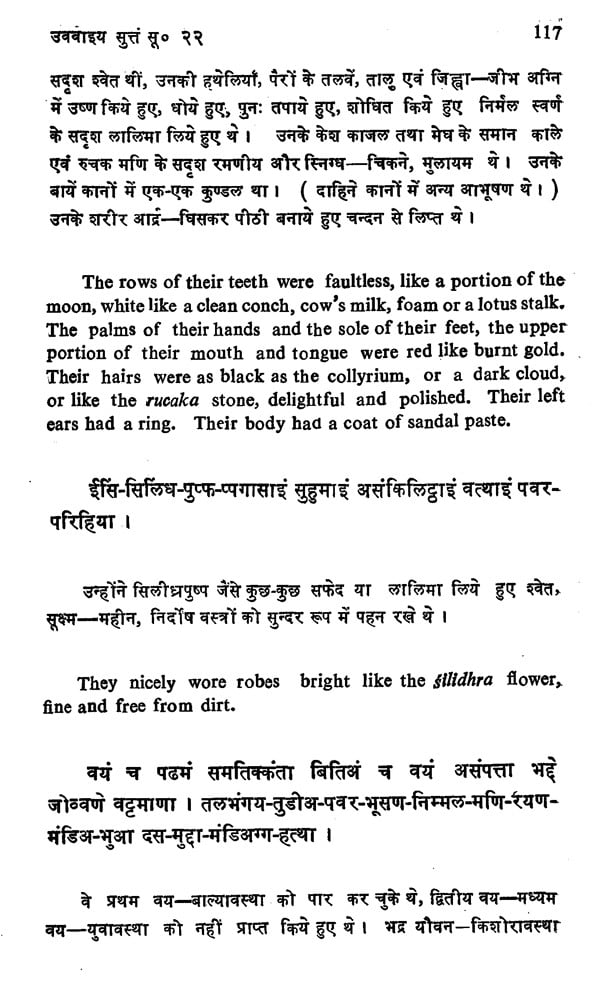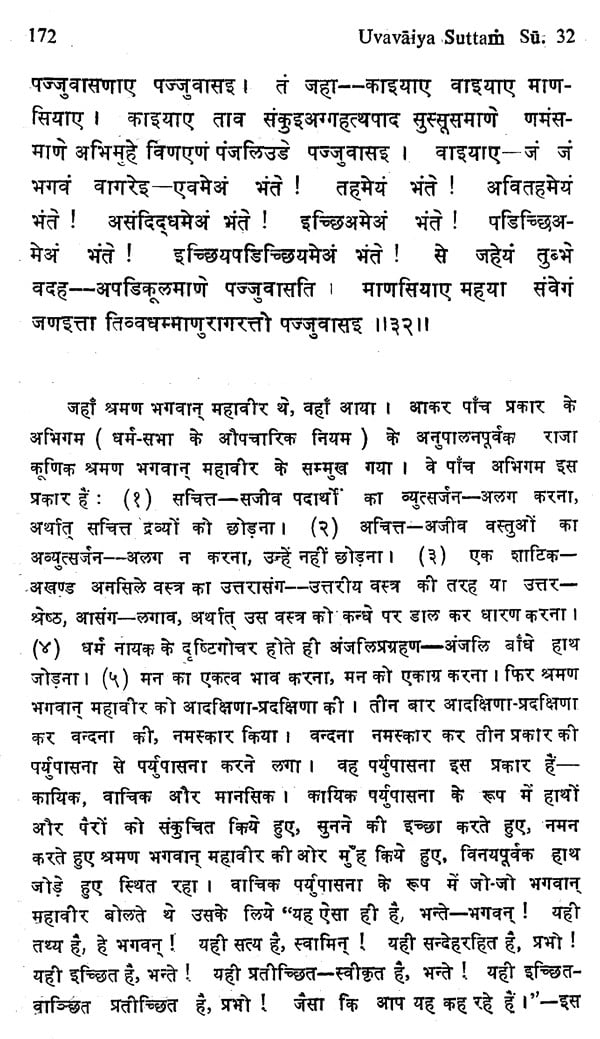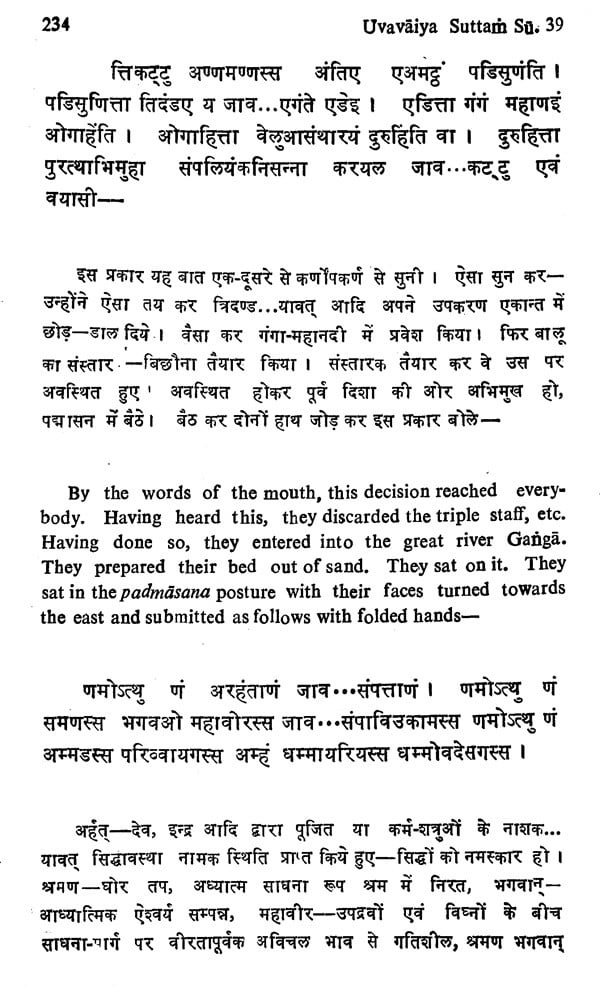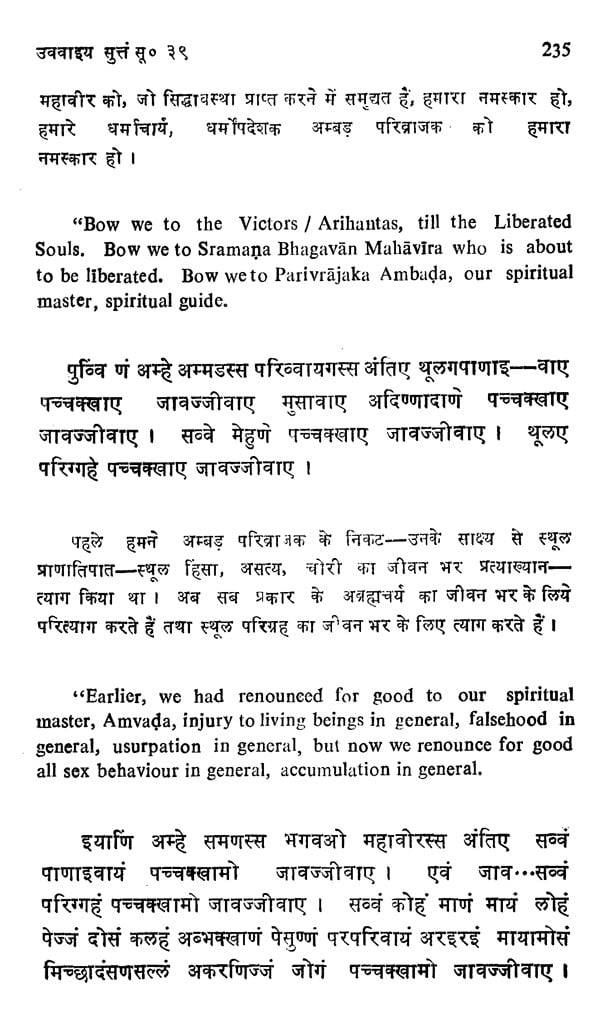
उववाइय सुत्तं- Uvavaiya Suttam- Aupapatika Sutram (An Old Book)
Book Specification
| Item Code: | UAB538 |
| Author: | Ganesh Lalwani |
| Publisher: | Prakrit Bharati Academy, Jaipur |
| Language: | Prakrit, Hindi and English |
| Edition: | 1988 |
| Pages: | 328 |
| Cover: | PAPERBACK |
| Other Details | 8.50 X 5.50 inches |
| Weight | 450 gm |
Book Description
One special characteristic of Uvavaiya Suttam is this that it gives a detailed description of a historical king, his capital and his profound devotion towards Bhagavan Mahavira. In Uvavaiya and in other Jaina Agamas he is known as Kunika and in the pages of Indian history as Ajatasatru. Historians primarily know him as a follower of the Buddha and they regard him as such. But the fact is this that he and his devotion to Mahavira has got such a wide coverage in Jaina Agamas which is not available in any other literature for any other personality. Even so that he had established a separate department to report to him about the daily routine of Mahavira. The head of that department was known as 'Pravrtti-Vaduka'. But then why his name is Kunika in Jaina Agamas and in history Ajatasatru? The answer is simple. Because he was called Ajatasatru in Buddhist Tripitakas. Now the question arises why the historians accepted that name? The answer is again simple. The Buddhists made their source literature available in English and in other European languages. That is why the historians knew Kunika as Ajatasatru and presented him as a follower of the Buddha though that was far from the fact. From this we, the Jainas, should take a lesson that due to our inactivity and lack of foresight the Jaina culture and history could not reach to the outer world.
This can also be said of Srenika, a great devotee of Bhagavan Mahavira. In Buddhist Tripitakas he was called Bimbisara and was depicted as a great follower of the Buddha, Accordingly the historians of India and the world know him as Bimbisara and consequently the ordinary readers know him as such while in Jaina Agamas Srenika has been called Bhimbhisara and by some other names almost similar to that. But no body knows of them. Most of the historians regard him as the ardent follower of the Buddha which he was not. I am not blaming the reserachers or historians, because the Jaina Agamas or Prakrit literature were not available to them.
This we can easily understand that how difficult it is for a foreigner to master a foreign language like Prakrit, Sanskrit and Hindi and then to do research work on them. Still the honour of doing research work on Jaina Agamas and Prakrit goes to foreign scholars like Hermann Jacobi, R. Pischel and others. How many Indians had done research work after mastering a foreign language on the history and culture of that nation ?
Let past be past and think of the present. If we chalk out a crashing programme for the publication of Jaina Agamas in foreign languages many misconceptions will be removed not only from the history of India but also of the world and they will know of the spiritual, social and historical values of the Jaina Agamas and the Jaina religion.
Prakrit Bharati Academy is doing a good job by publishing Jaina Agamas with English translation. For this thanks are due to Sri D. R. Mehta, its Secretary and Mahopadhyay Sri Vinaysagar, its Director. Thus the foreign scholars will get an easy access to Prakrit and that will open new vistas in the field of research.
Place of Uvavaiya Suttam in Agama Literature:
The present Agama literature consists of Anga, Upanga, Mula, Chheda and Prakirnakas. There are 12 Angas and 12 Upangas. Uvavaiya is the first amongst the 12 Upangas. It is also known as Uvavaiya and Aupapatika, While Uvavaiya is the first Upanga, Acaranga is the first Anga. It is naturally expected that the Upanga should be in supplement to the Anga, as there are 12 Angas and 12 Upangas, More so when their relations are acknowledged chronologically, i. e., this Upanga belongs to that Anga, The affix 'upa' generally means. next to it, e.g. Acarya-Upacarya, Kulapati-Upakulapati But there is no such affinity in the subject-matter of a Anga with its Upanga. It will not be proper if we do so by manipulation. The fact is in ancient times 4 Vedas had 4 Upangas. Their affinity is also in doubt, Whatever becomes in vogue in one tradition is generally adopted in other. traditions. It seems that the Jaina seers added 12 Upangas with 12 Angas accordingly. This is a nice example of how things are exchanged in two contemporary traditions.
In Jaina literature we get the word 'Jina' but nowhere we get 'Jaina' in the sense of a follower of the Jina, But in that age when Sanskrit became dominant the word 'Jaina' became in vogue: jino devata yasya sah jainah-one whose god is Jina' is Jaina, Strange though it may seem, in that very age words like Bauddha, Saiva, Vaisnava etc. were coined as derived from the rules of Sanskrit Grammar. These are used even now. So we should not be surprised if Upangas are added to Angas due to contemporary fashion.
Secondly, it may be like this: Though there is no relation in the subject matter, still if we have to give some books the prestige of an Anga why not call them Upanga? Even today: one who is not Acarya but like a Acarya, is called Upacarya. So Angas and Upangas should not be made a subject-matter of dispute or of a lengthy discussion. Nor the matter is as complex as such.
**Contents and Sample Pages**
